Abstract
In Experiment 1, three pigeons' key pecking was maintained under a variable-interval 60-s schedule of food reinforcement. A 1-s unsignaled nonresetting delay to reinforcement was then added. Rates decreased and stabilized at values below those observed under immediate-reinforcement conditions. A brief stimulus change (key lit red for 0.5 s) was then arranged to follow immediately the peck that began the delay. Response rates quickly returned to baseline levels. Subsequently, rates near baseline levels were maintained with briefly signaled delays of 3 and 9 s. When a 27-s briefly signaled delay was instituted, response rates decreased to low levels. In Experiment 2, four pigeons' responding was first maintained under a multiple variable-interval 60-s (green key) variable-interval 60-s (red key) schedule. Response rates in both components fell to low levels when a 3-s unsignaled delay was added. In the first component delays were then briefly signaled in the same manner as Experiment 1, and in the second component they were signaled with a change in key color that remained until food was delivered. Response rates increased to near baseline levels in both components, and remained near baseline when the delays in both components were lengthened to 9 s. When delays were lengthened to 27 s, response rates fell to low levels in the briefly signaled delay component for three of four pigeons while remaining at or near baseline in the completely signaled delay component. In Experiment 3, low response rates under a 9-s unsignaled delay to reinforcement (tandem variable-interval 60 s fixed-time 9 s) increased when the delay was briefly signaled. The role of the brief stimulus as conditioned reinforcement may be a function of its temporal relation to food, and thus may be related to the eliciting function of the stimulus.
Keywords: brief stimulus, conditioned reinforcement, delay of reinforcement, signaled delay of reinforcement, trace autoshaping, trace conditioning, variable-interval schedules, key peck, pigeons
Full text
PDF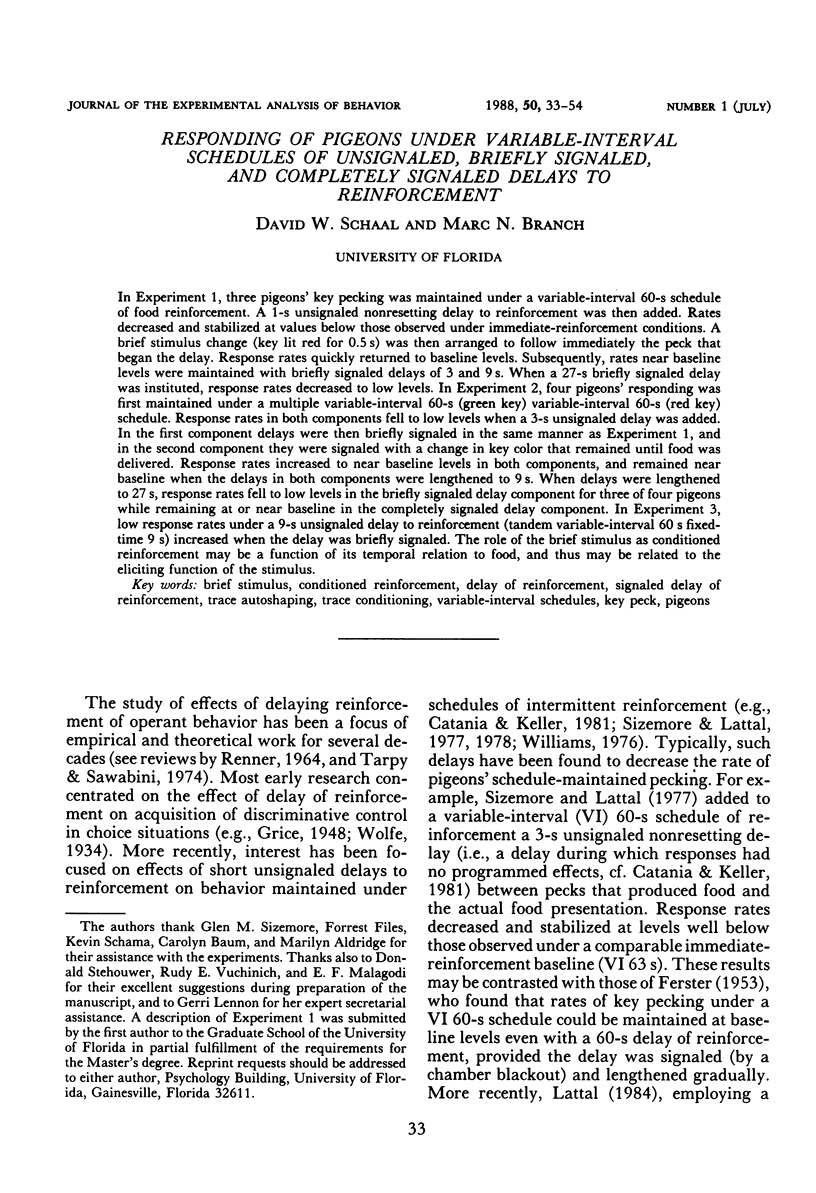
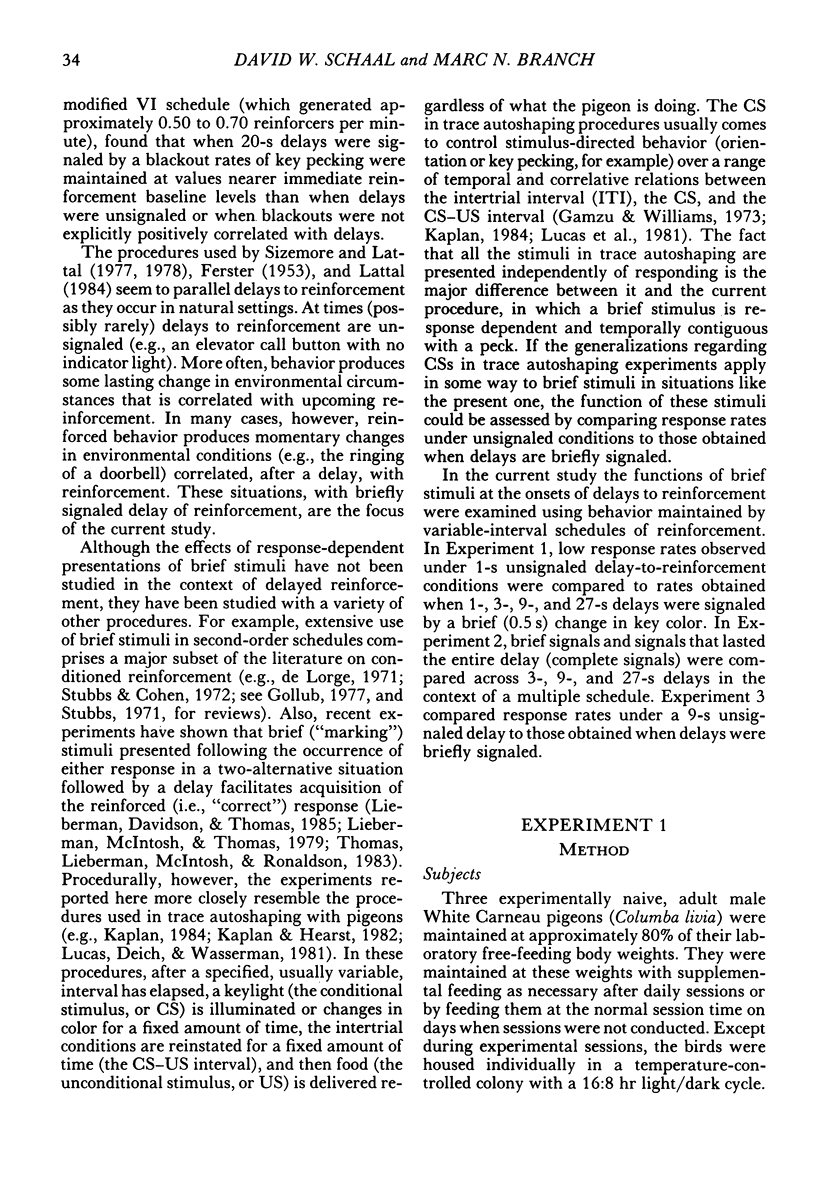
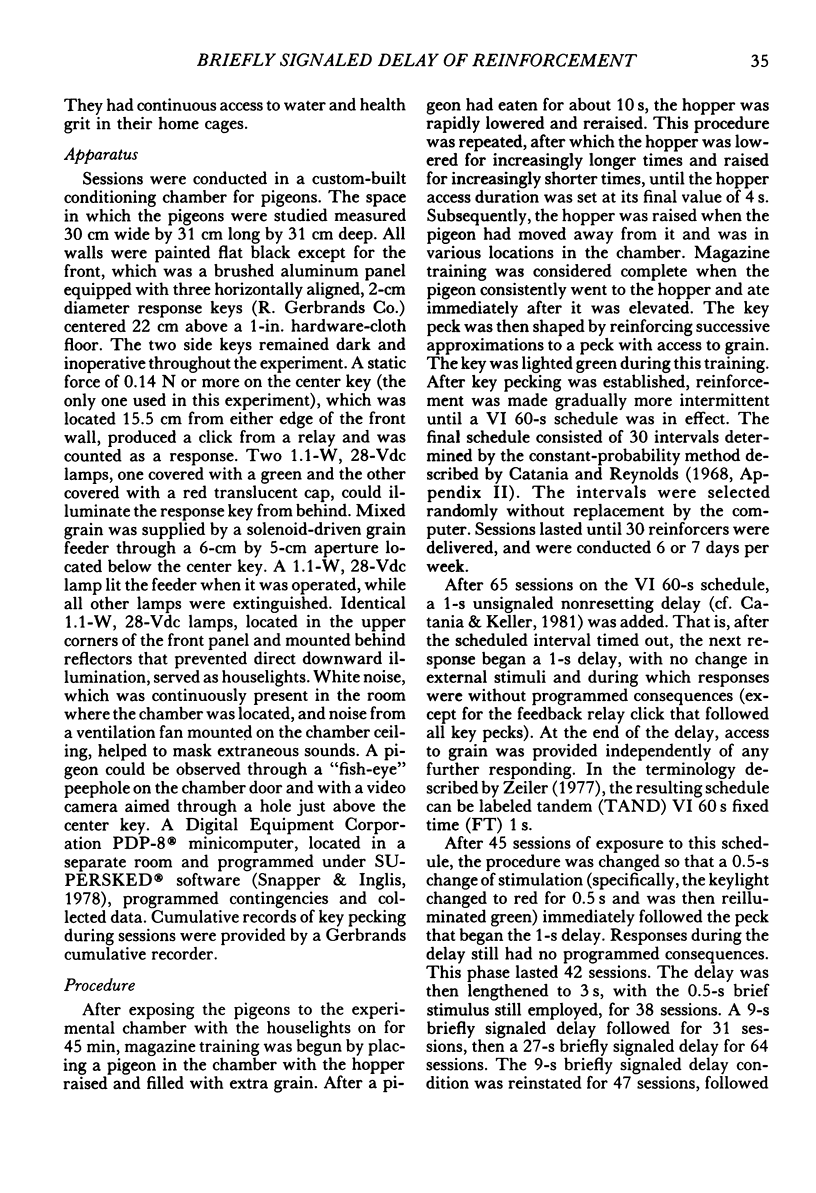
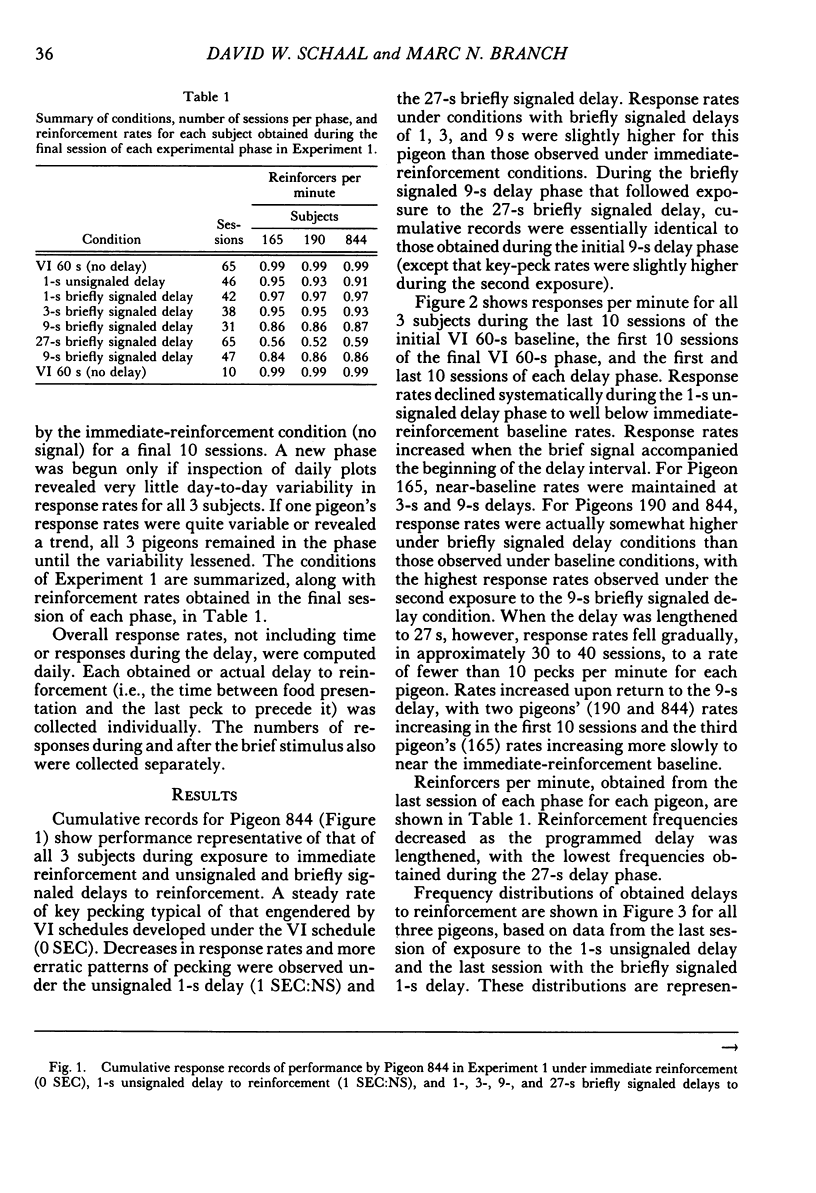
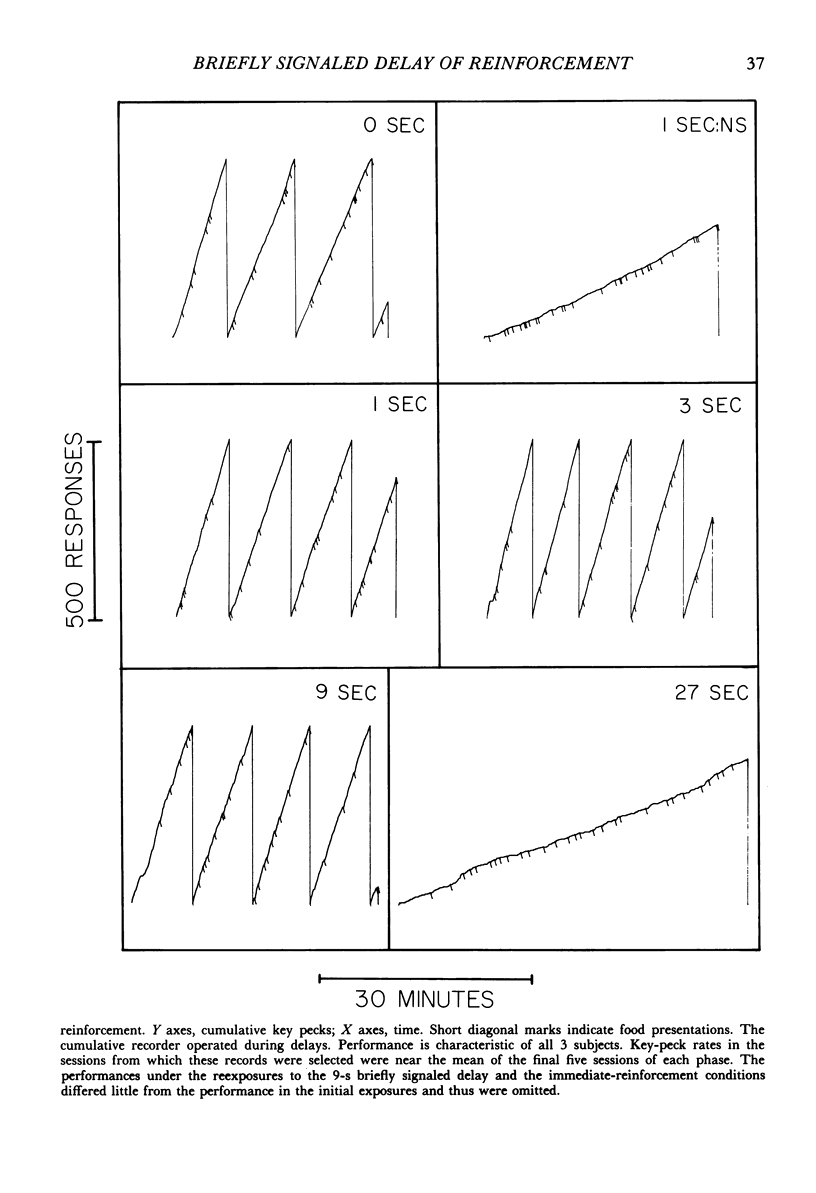
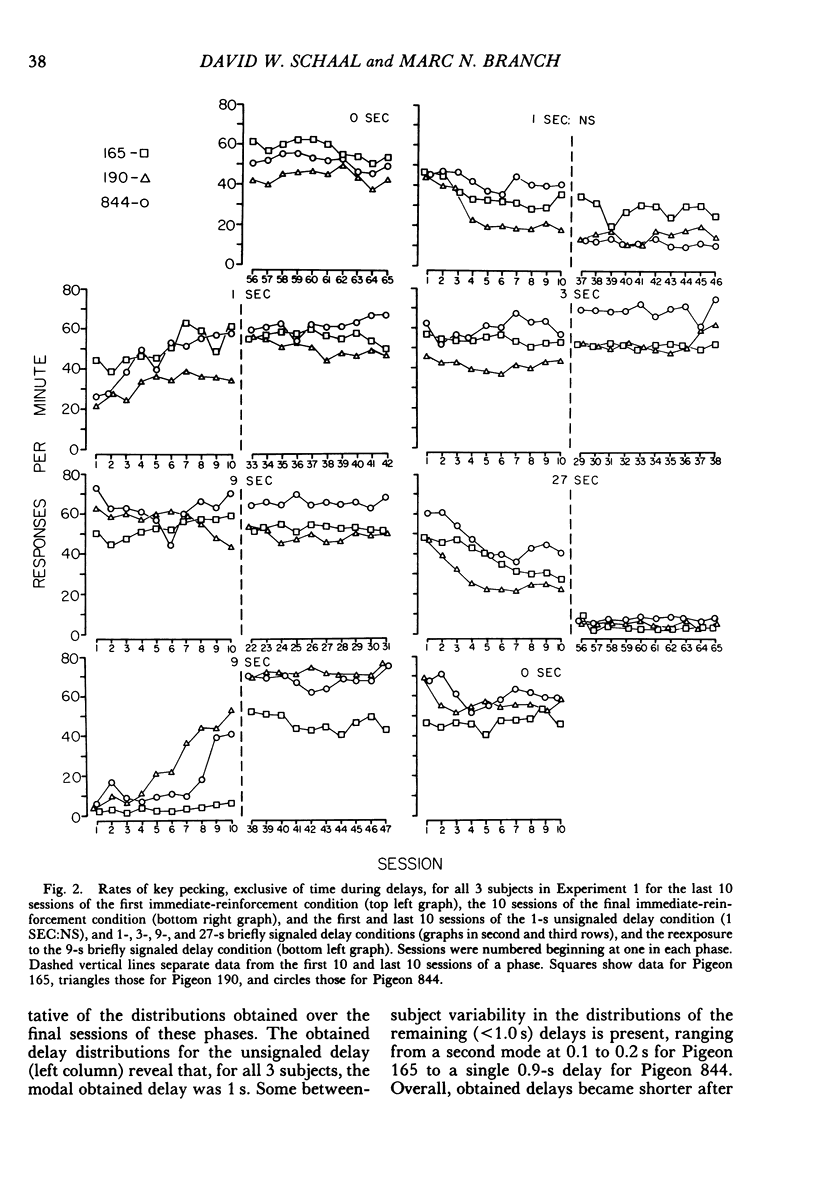

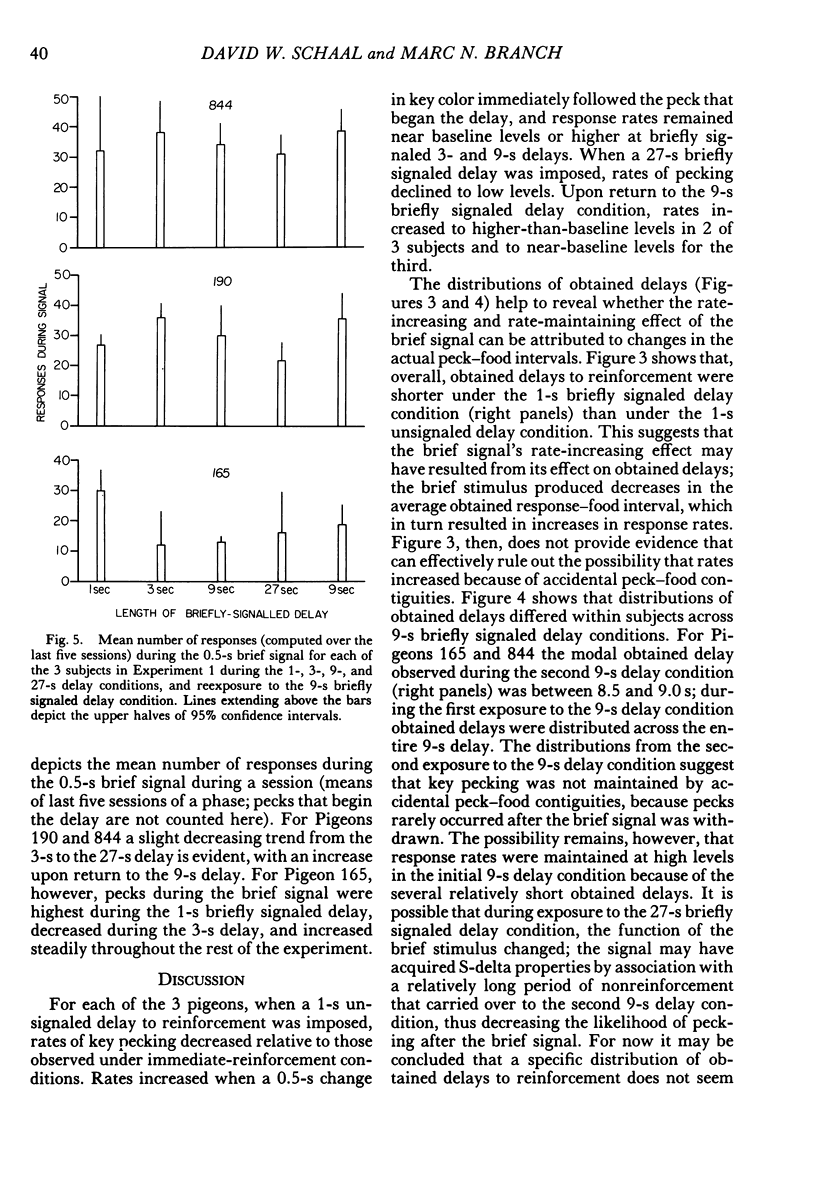
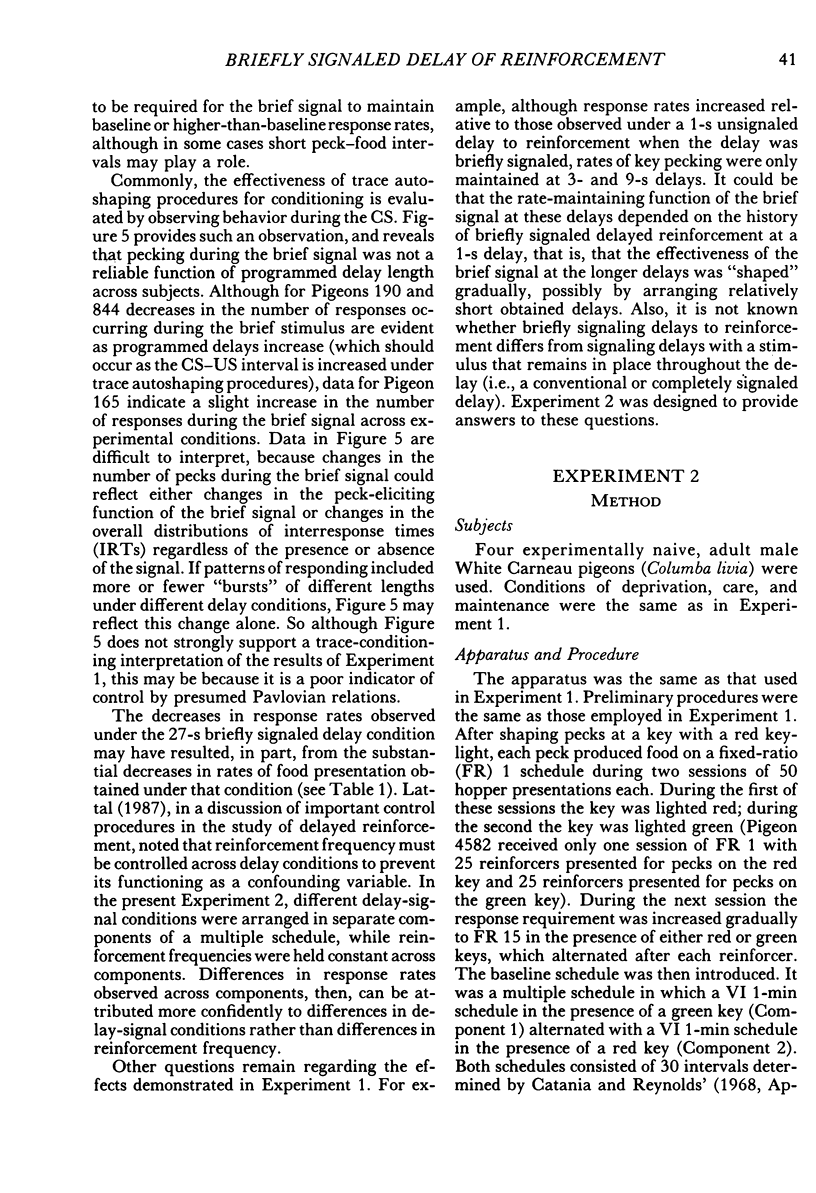
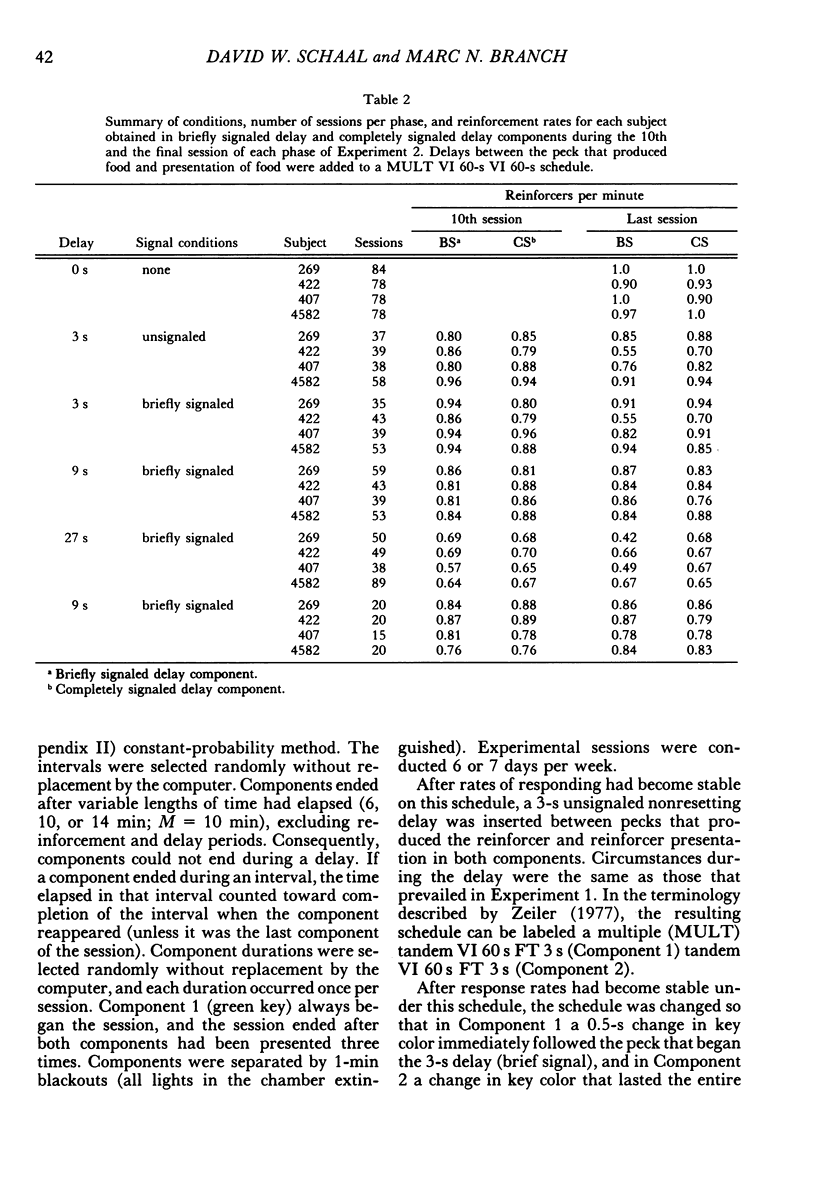
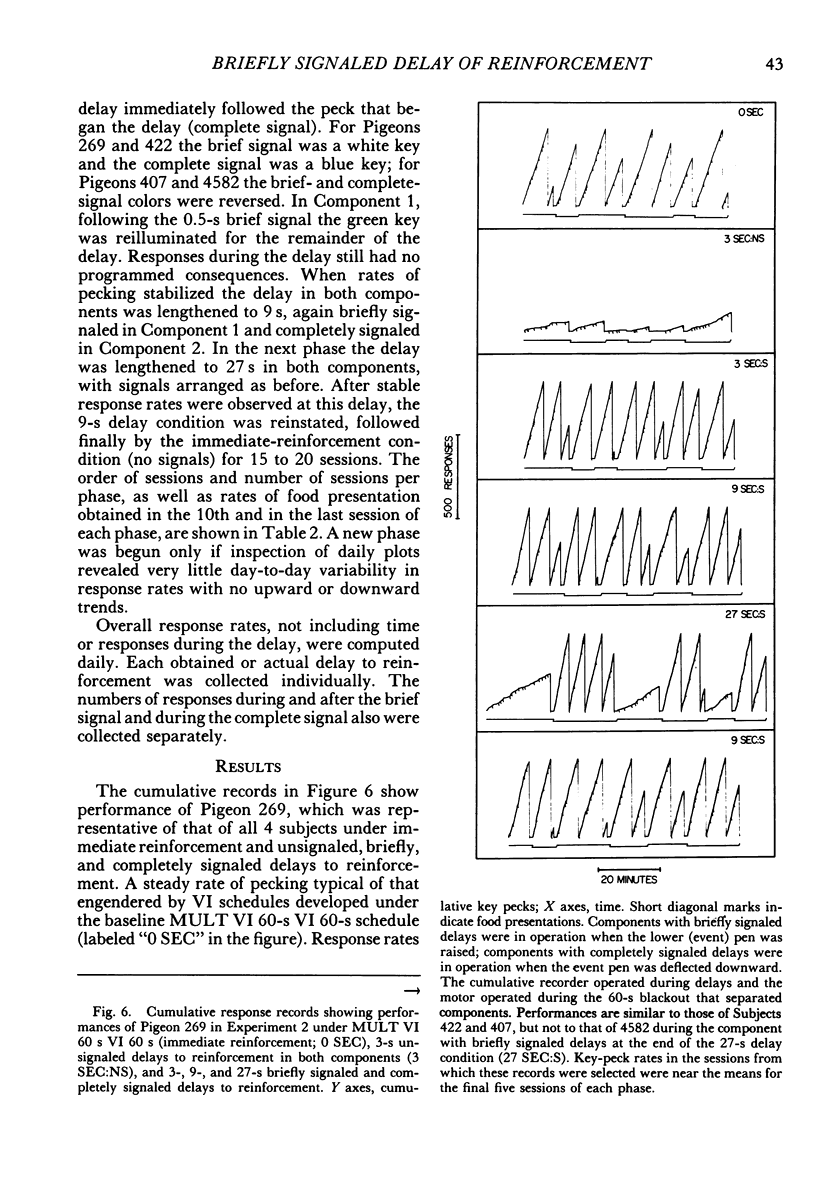
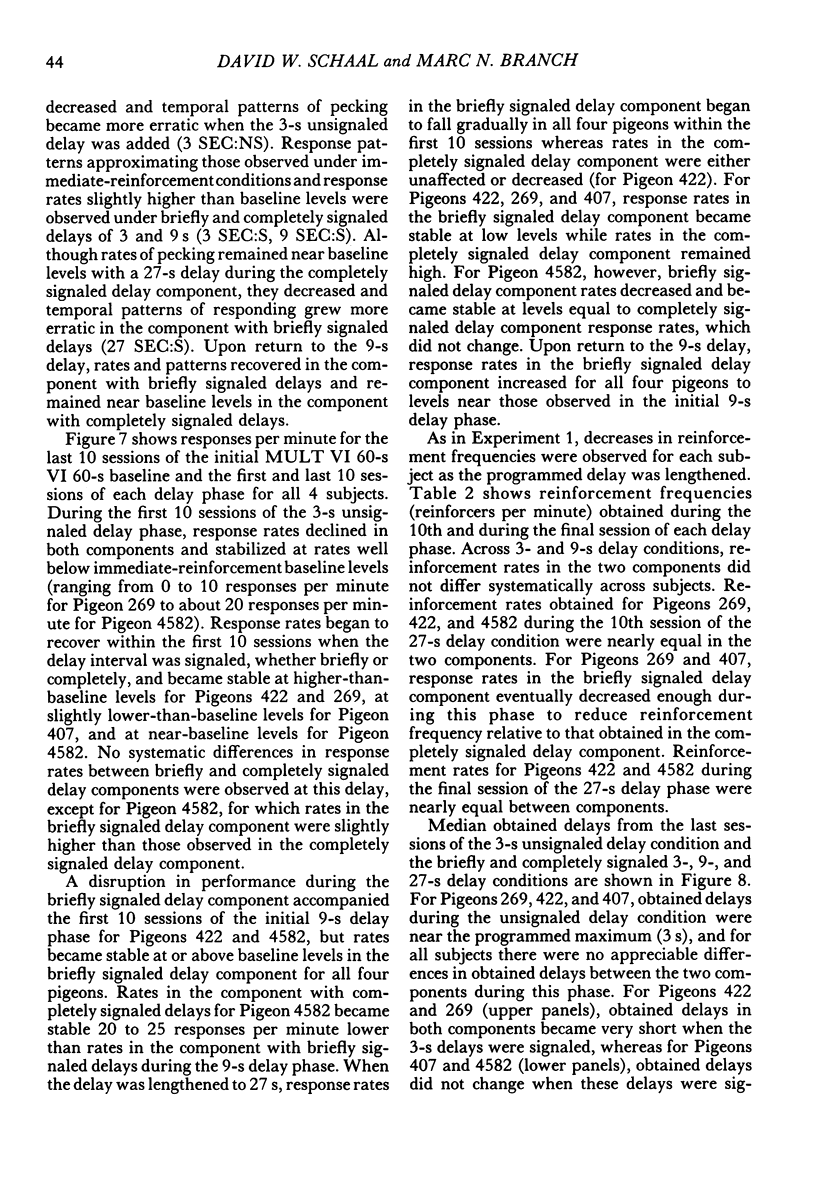
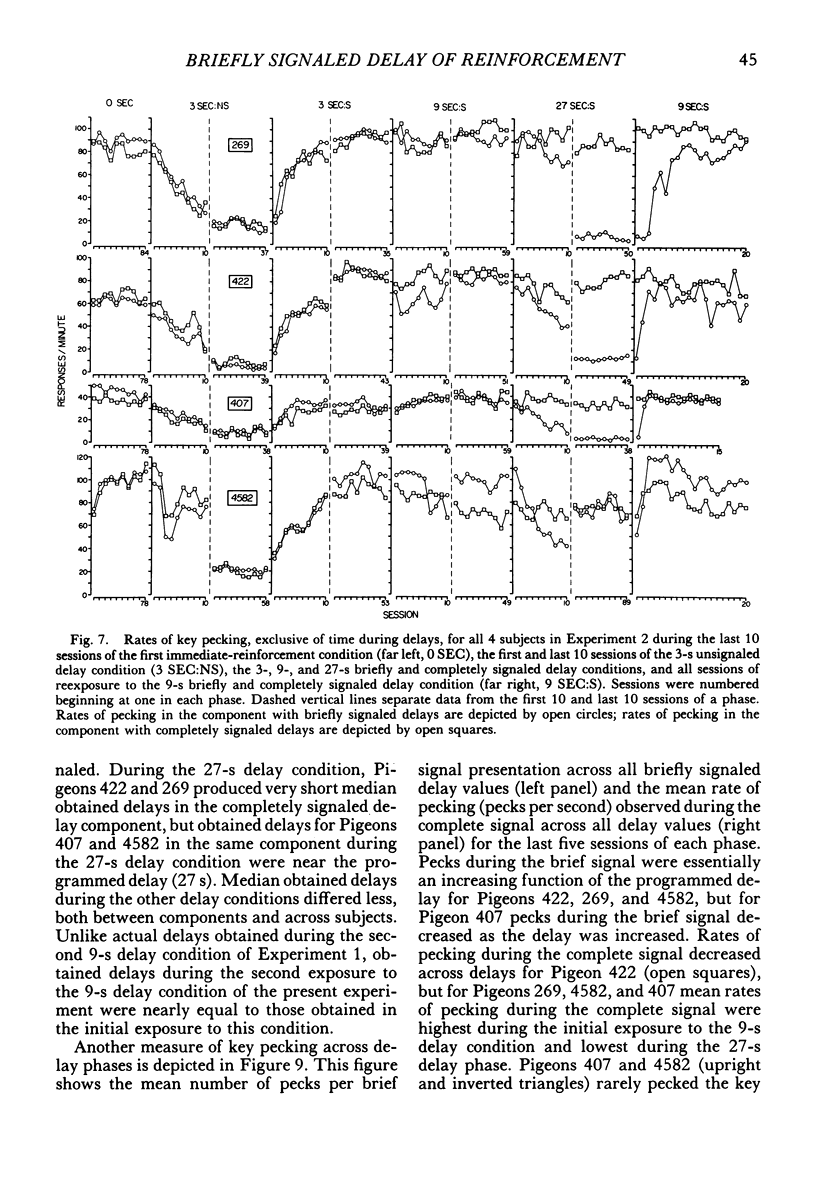
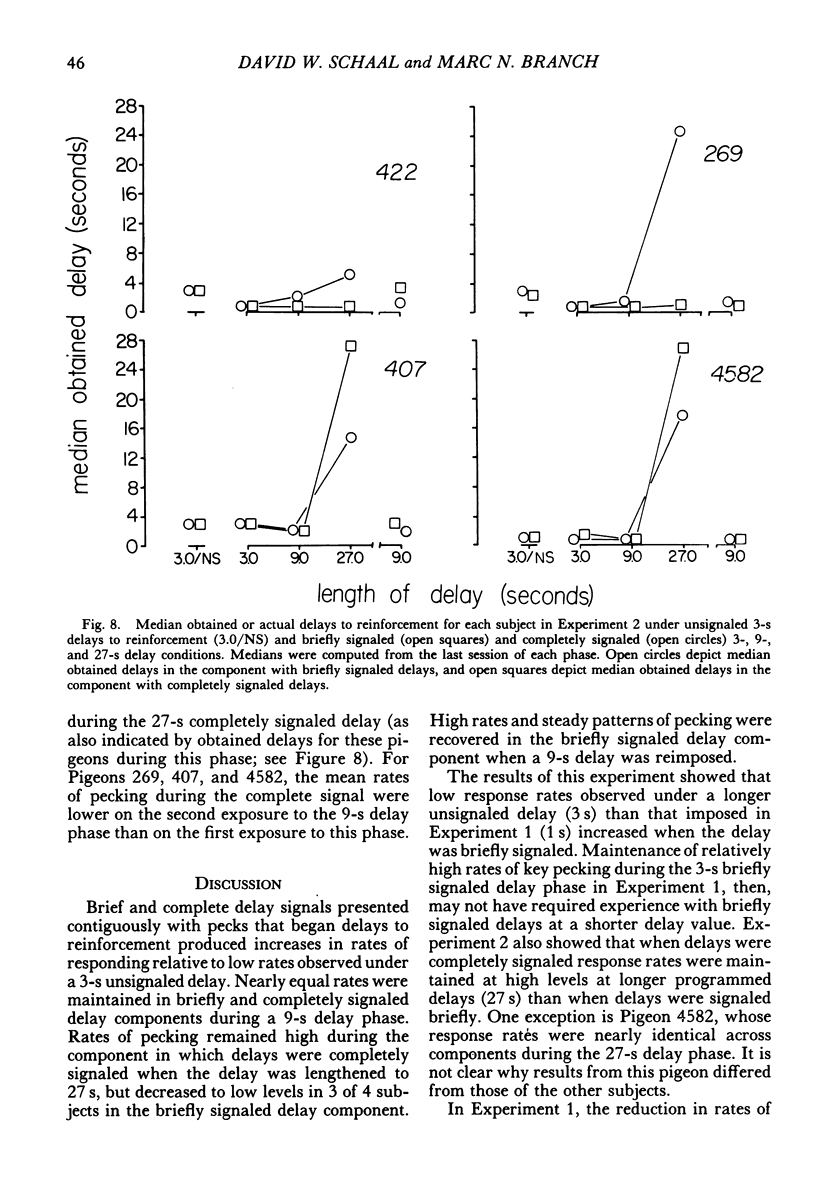
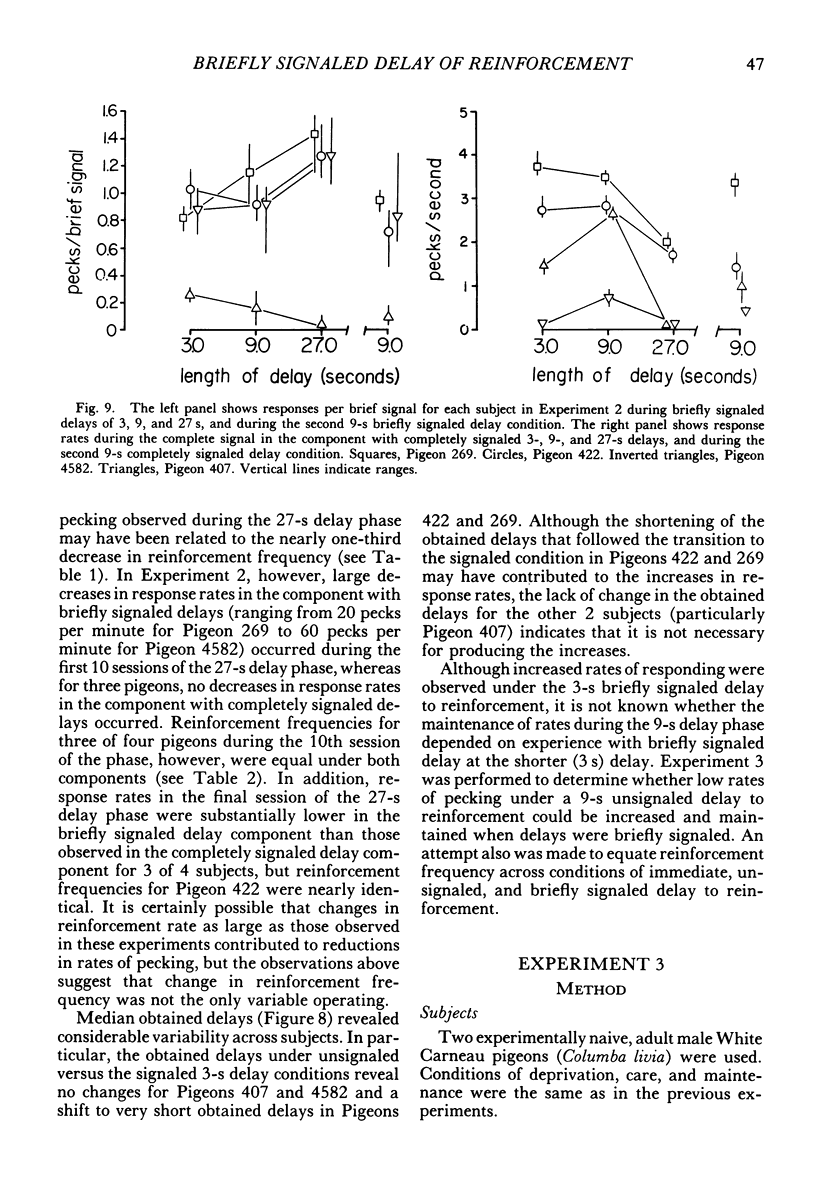
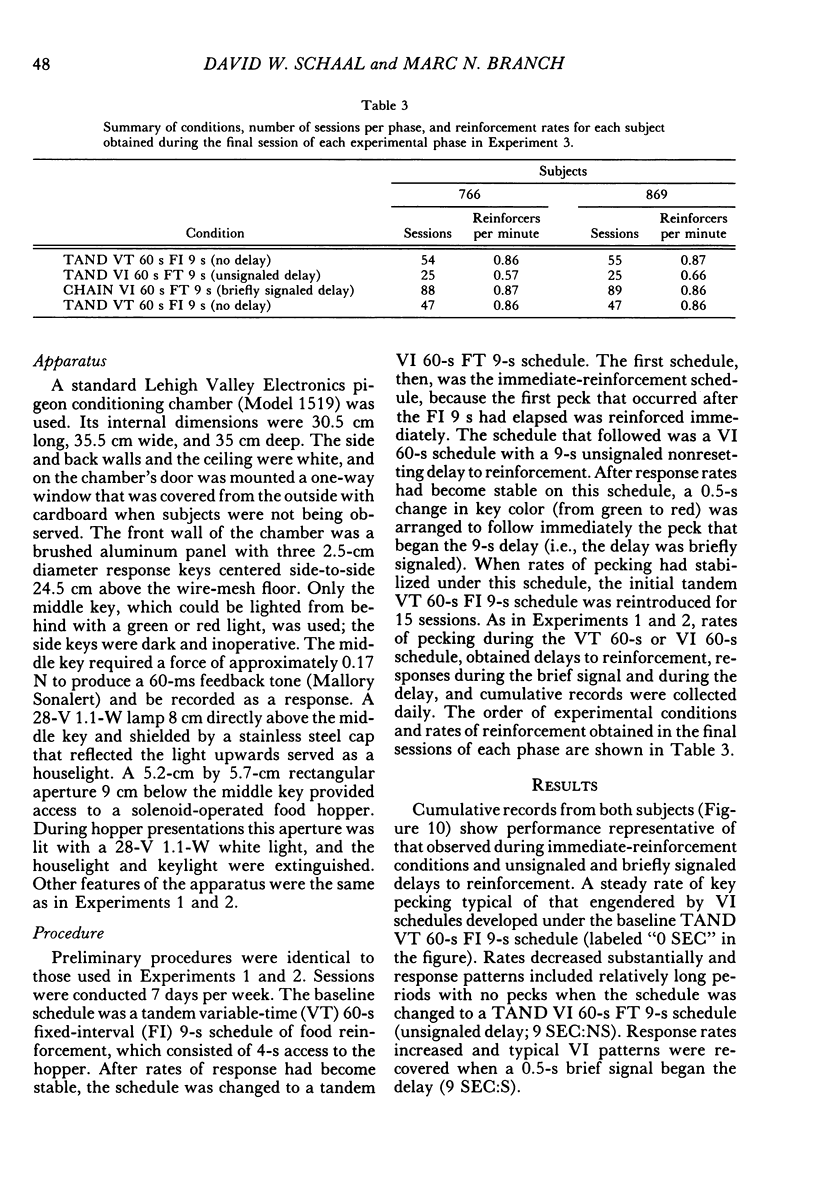
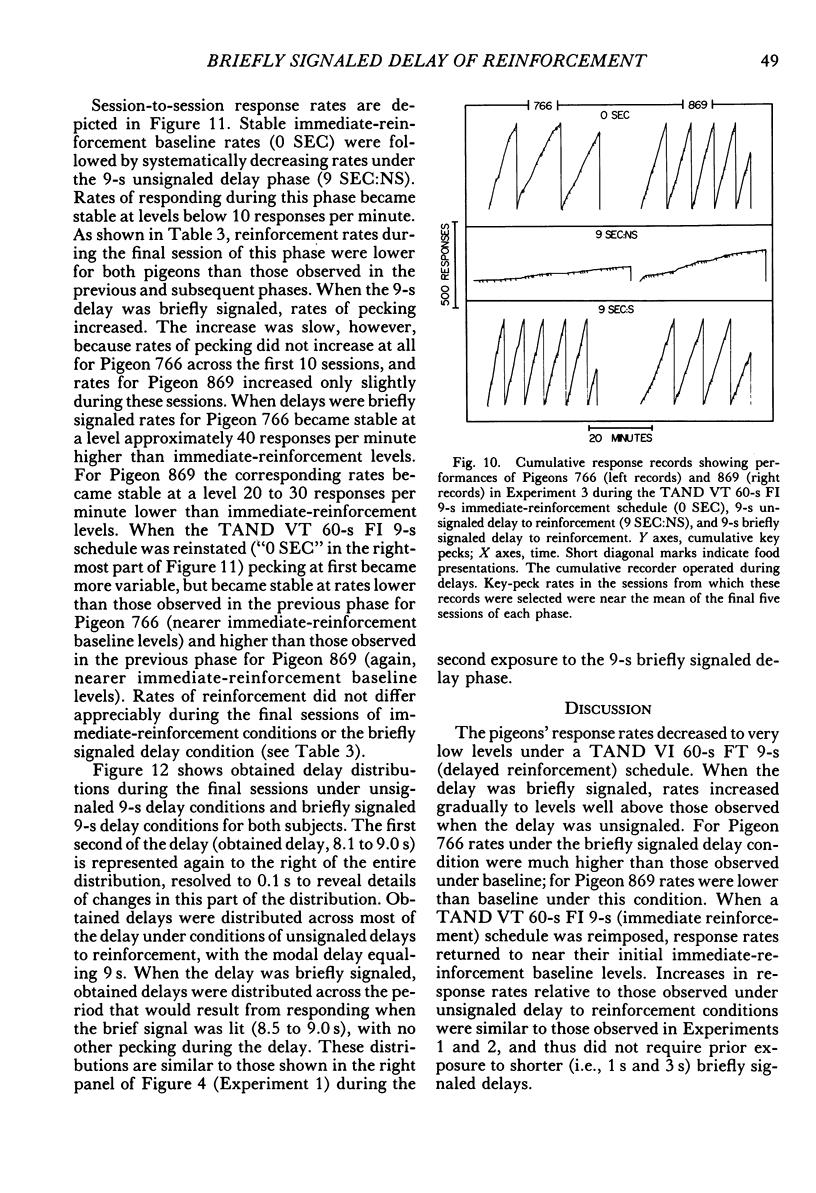
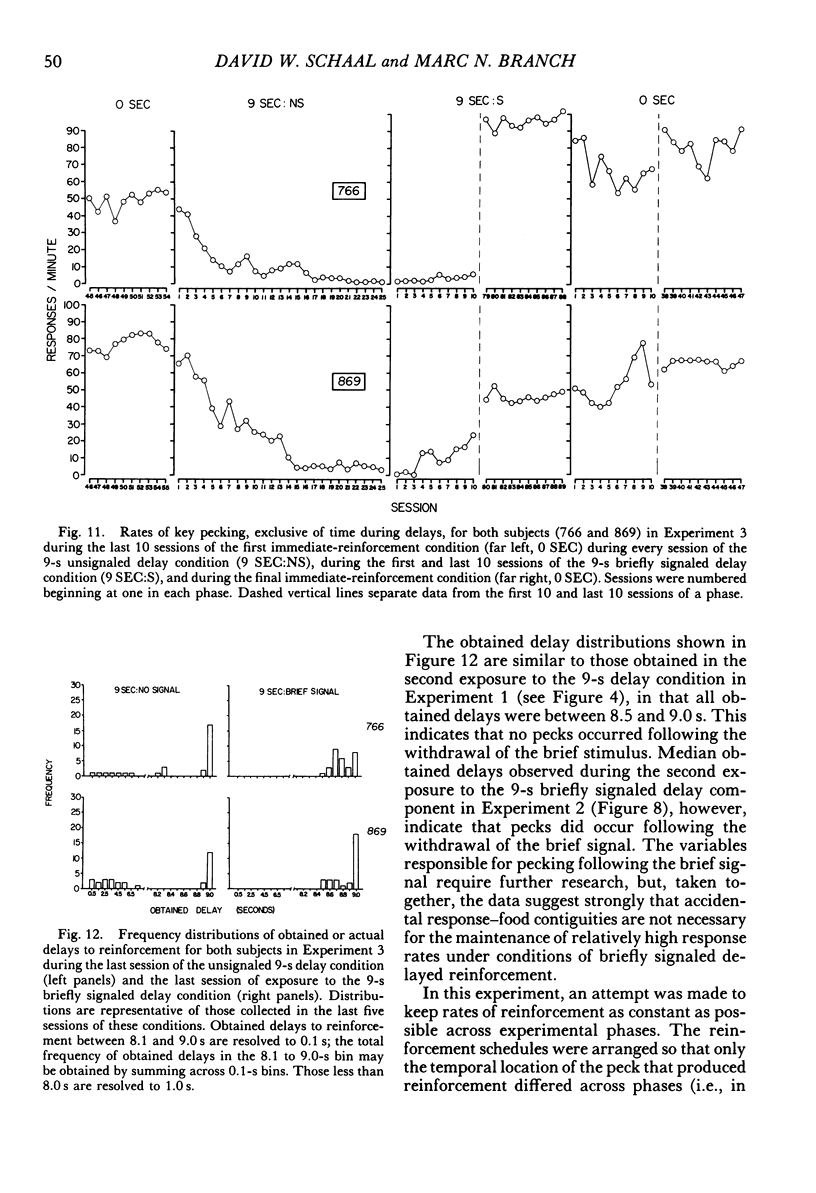
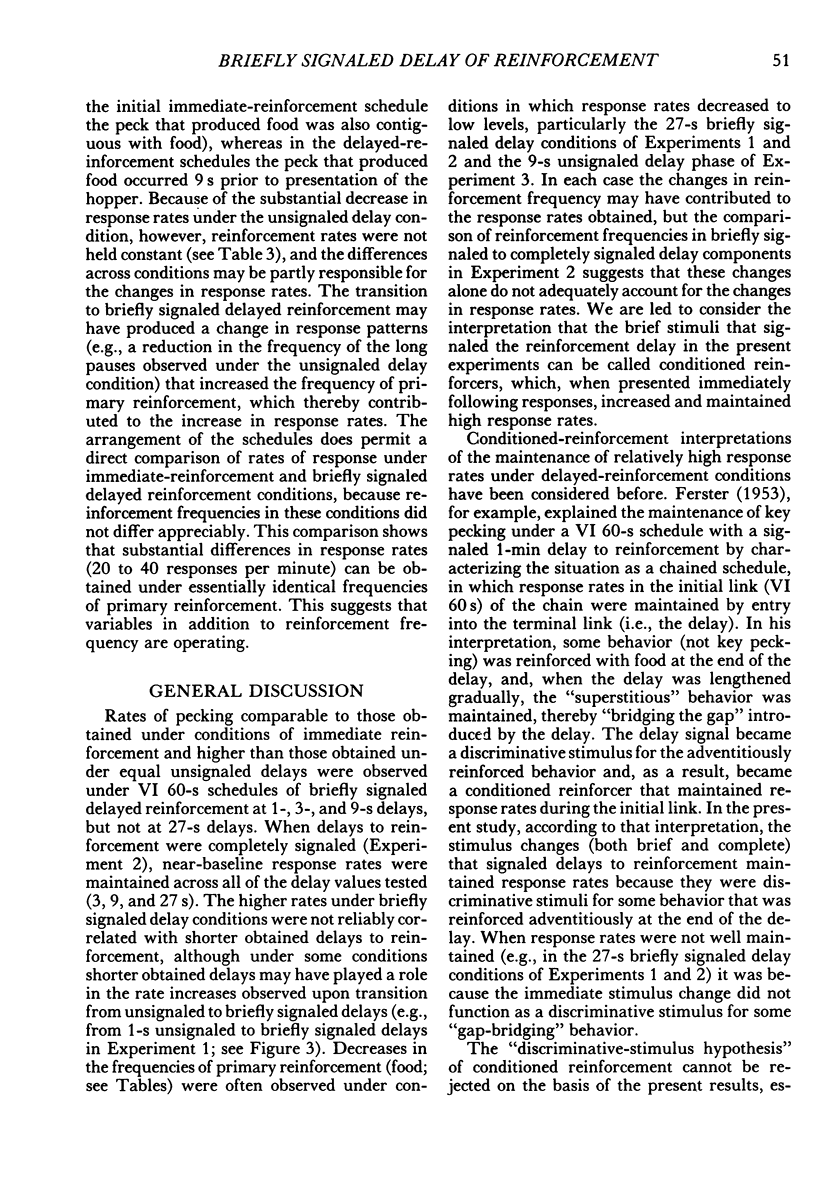
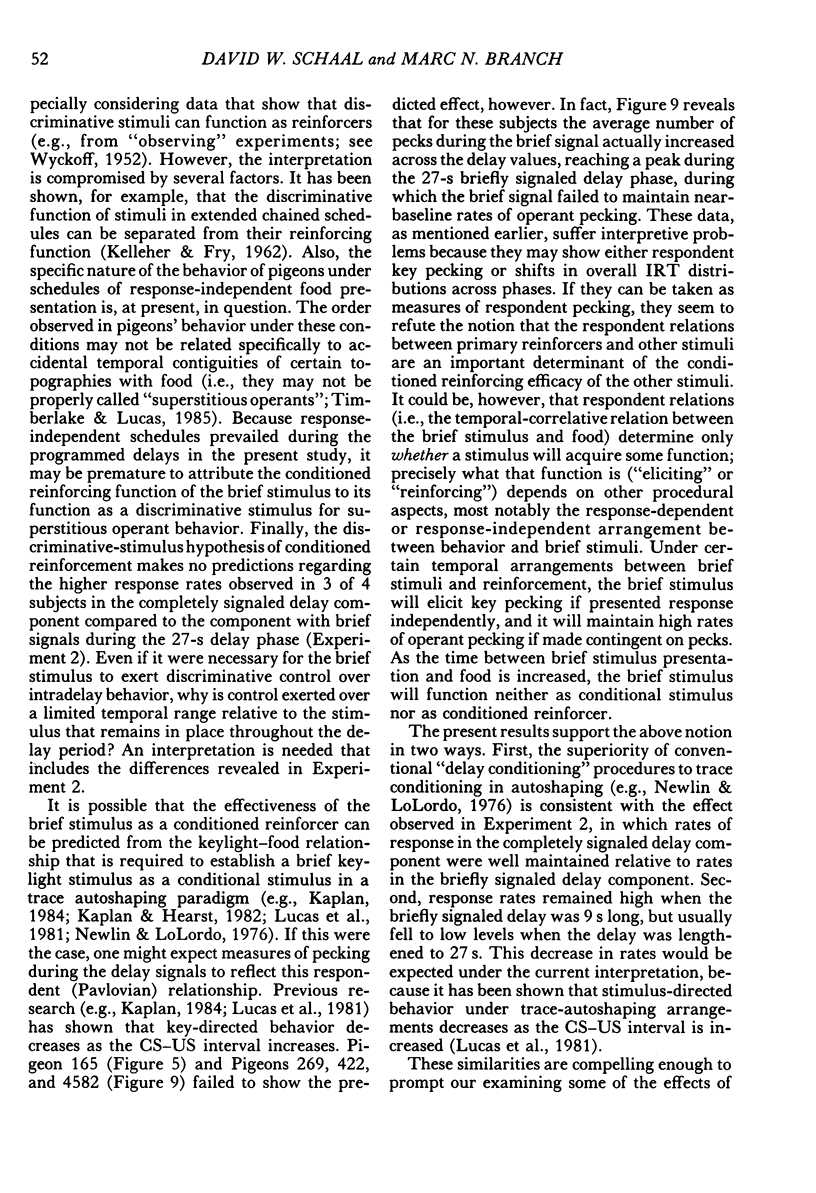
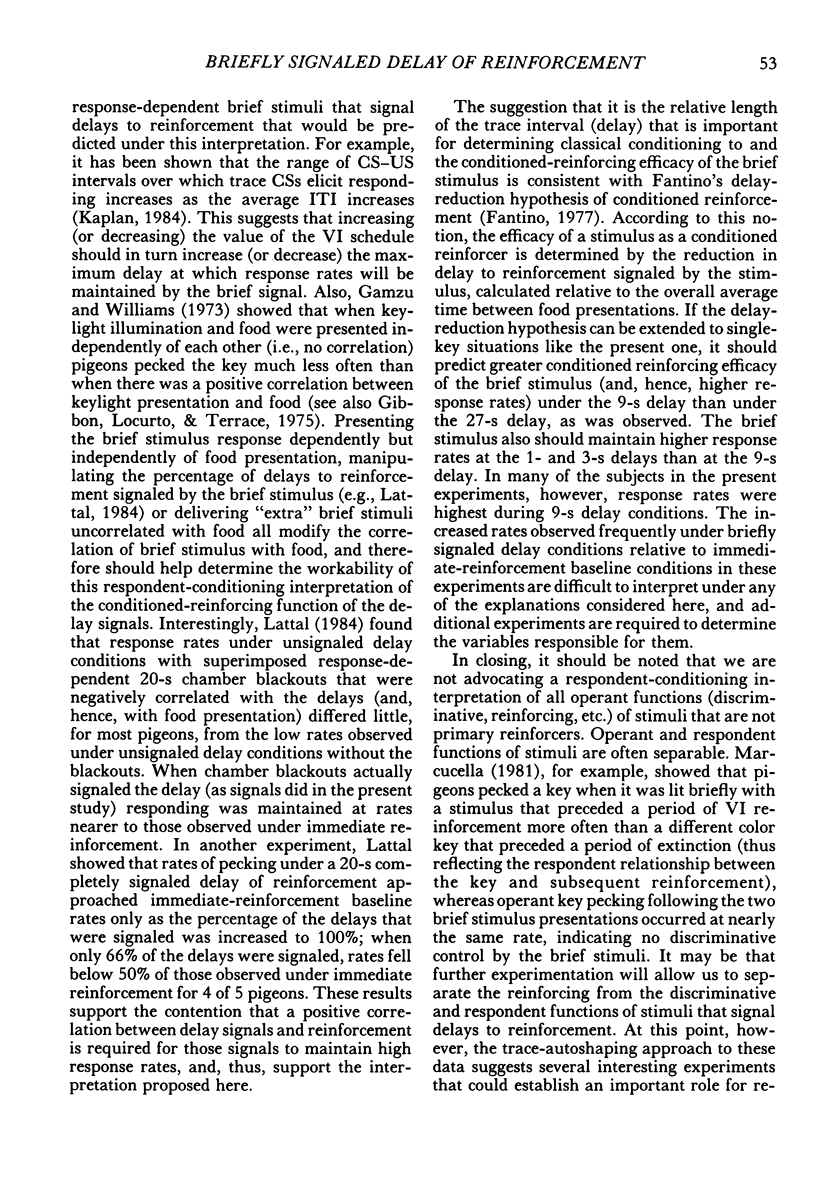
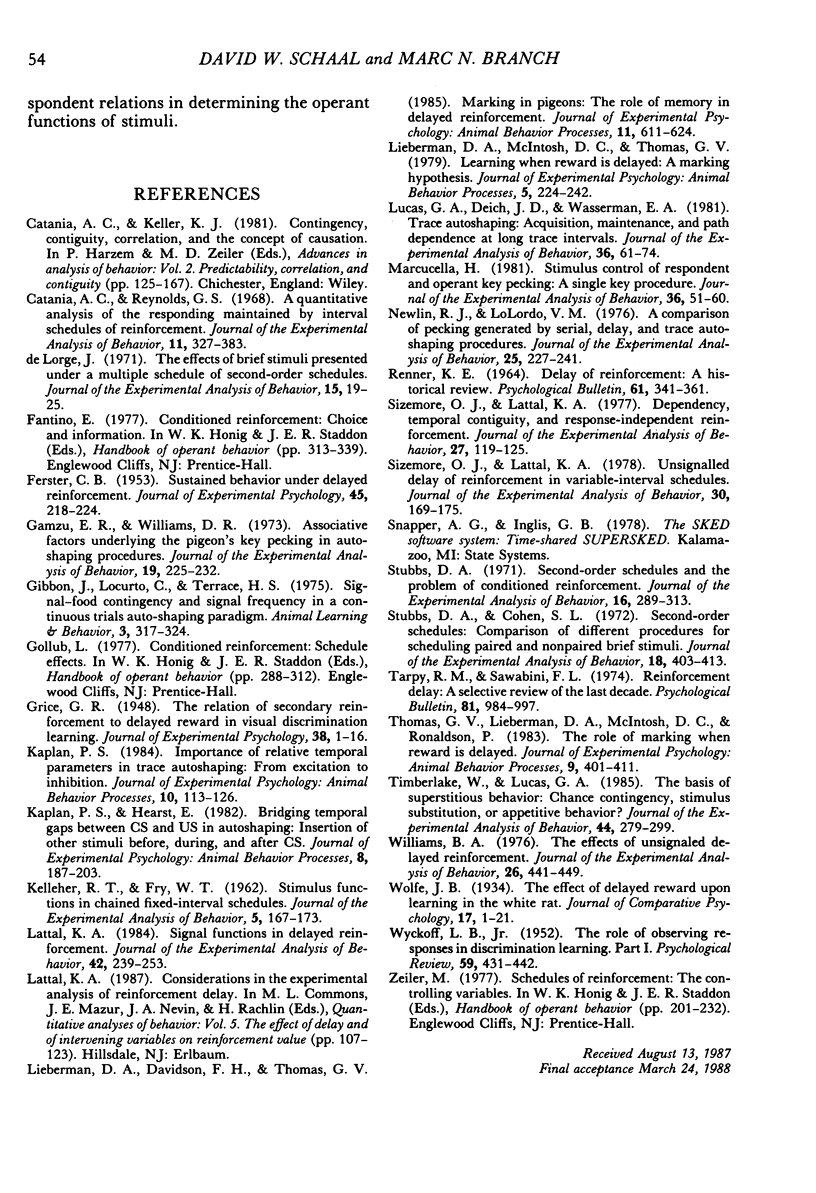
Selected References
These references are in PubMed. This may not be the complete list of references from this article.
- Catania A. C., Reynolds G. S. A quantitative analysis of the responding maintained by interval schedules of reinforcement. J Exp Anal Behav. 1968 May;11(3 Suppl):327–383. doi: 10.1901/jeab.1968.11-s327. [DOI] [PMC free article] [PubMed] [Google Scholar]
- De Lorge J. The effects of brief stimuli presented under a multiple schedule of second-order schedules. J Exp Anal Behav. 1971 Jan;15(1):19–25. doi: 10.1901/jeab.1971.15-19. [DOI] [PMC free article] [PubMed] [Google Scholar]
- FERSTER C. B. Sustained behavior under delayed reinforcement. J Exp Psychol. 1953 Apr;45(4):218–224. doi: 10.1037/h0062158. [DOI] [PubMed] [Google Scholar]
- Gamzu E. R., Williams D. R. Associative factors underlying the pigeon's key pecking in auto-shaping procedures. J Exp Anal Behav. 1973 Mar;19(2):225–232. doi: 10.1901/jeab.1973.19-225. [DOI] [PMC free article] [PubMed] [Google Scholar]
- KELLEHER R. T., FRY W. T. Stimulus functions in chained fixed-interval schedules. J Exp Anal Behav. 1962 Apr;5:167–173. doi: 10.1901/jeab.1962.5-167. [DOI] [PMC free article] [PubMed] [Google Scholar]
- Kaplan P. S., Hearst E. Bridging temporal gaps between CS and US in autoshaping: insertion of other stimuli before, during, and after CS. J Exp Psychol Anim Behav Process. 1982 Apr;8(2):187–203. [PubMed] [Google Scholar]
- Lattal K. A. Signal functions in delayed reinforcement. J Exp Anal Behav. 1984 Sep;42(2):239–253. doi: 10.1901/jeab.1984.42-239. [DOI] [PMC free article] [PubMed] [Google Scholar]
- Lieberman D. A., McIntosh D. C., Thomas G. V. Learning when reward is delayed: a marking hypothesis. J Exp Psychol Anim Behav Process. 1979 Jul;5(3):224–242. doi: 10.1037//0097-7403.5.3.224. [DOI] [PubMed] [Google Scholar]
- Lucas G. A., Deich J. D., Wasserman E. A. Trace autoshaping: Acquisition, maintenance, and path dependence at long trace intervals. J Exp Anal Behav. 1981 Jul;36(1):61–74. doi: 10.1901/jeab.1981.36-61. [DOI] [PMC free article] [PubMed] [Google Scholar]
- Marcucella H. Stimulus control of respondent and operant key pecking: A single key procedure. J Exp Anal Behav. 1981 Jul;36(1):51–60. doi: 10.1901/jeab.1981.36-51. [DOI] [PMC free article] [PubMed] [Google Scholar]
- Newlin R. J., Lolordo V. M. A comparison of pecking generated by serial, delay, and trace autoshaping procedures. J Exp Anal Behav. 1976 Mar;25(2):227–241. doi: 10.1901/jeab.1976.25-227. [DOI] [PMC free article] [PubMed] [Google Scholar]
- RENNER K. E. DELAYED OF REINFORCEMENT: A HISTORICAL REVIEW. Psychol Bull. 1964 May;61:341–361. doi: 10.1037/h0048335. [DOI] [PubMed] [Google Scholar]
- Sizemore O. J., Lattal K. A. Dependency, temporal contiguity, and response-independent reinforcement. J Exp Anal Behav. 1977 Jan;27(1):119–125. doi: 10.1901/jeab.1977.27-119. [DOI] [PMC free article] [PubMed] [Google Scholar]
- Sizemore O. J., Lattal K. A. Unsignalled delay of reinforcement in variable-interval schedules. J Exp Anal Behav. 1978 Sep;30(2):169–175. doi: 10.1901/jeab.1978.30-169. [DOI] [PMC free article] [PubMed] [Google Scholar]
- Stubbs D. A., Cohen S. L. Second-order schedules: comparison of different procedures for scheduling paired and nonpaired brief stimuli. J Exp Anal Behav. 1972 Nov;18(3):403–413. doi: 10.1901/jeab.1972.18-403. [DOI] [PMC free article] [PubMed] [Google Scholar]
- Stubbs D. A. Second-order schedules and the problem of conditioned reinforcement. J Exp Anal Behav. 1971 Nov;16(3):289–313. doi: 10.1901/jeab.1971.16-289. [DOI] [PMC free article] [PubMed] [Google Scholar]
- Thomas G. V., Lieberman D. A., McIntosh D. C., Ronaldson P. The role of marking when reward is delayed. J Exp Psychol Anim Behav Process. 1983 Oct;9(4):401–411. [PubMed] [Google Scholar]
- Timberlake W., Lucas G. A. The basis of superstitious behavior: chance contingency, stimulus substitution, or appetitive behavior? J Exp Anal Behav. 1985 Nov;44(3):279–299. doi: 10.1901/jeab.1985.44-279. [DOI] [PMC free article] [PubMed] [Google Scholar]
- WYCKOFF L. B., Jr The role of observing responses in discrimination learning. Psychol Rev. 1952 Nov;59(6):431–442. doi: 10.1037/h0053932. [DOI] [PubMed] [Google Scholar]
- Williams B. A. The effects of unsignalled delayed reinforcement. J Exp Anal Behav. 1976 Nov;26(3):441–449. doi: 10.1901/jeab.1976.26-441. [DOI] [PMC free article] [PubMed] [Google Scholar]


